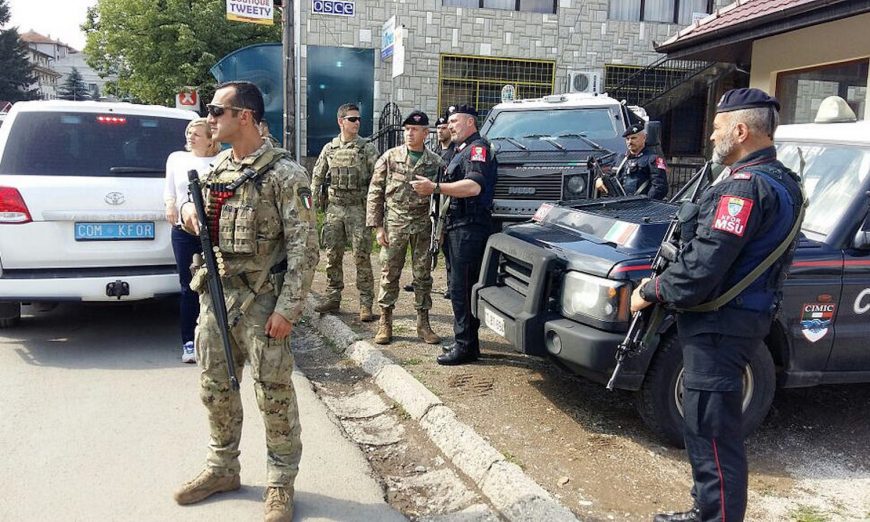Martin Shaw *
6 – 3 – 2007
![]() The admitted evidence of Serbian atrocities in Bosnia makes the International Court of Justice ruling self-contradictory, insists Martin Shaw.
The admitted evidence of Serbian atrocities in Bosnia makes the International Court of Justice ruling self-contradictory, insists Martin Shaw.
“It is by no means clear – despite what Martin Shaw writes in openDemocracy – that the Bosnian Serbs’ policy of ‘cleansing’ those parts of Bosnia they controlled of their Muslim population through murder, terror and forced displacement,abhorrent as it was, constituted an attempt to destroy a substantial part of the Bosnian Muslim population.
If the campaign was at its core an attempt to remove the Bosnian Muslims from a particular patch of territory, rather than eradicate all or many of them, it was not genocide in the terms of the 1948 convention. At any rate, that is the way the law has been interpreted by the war-crimes tribunals for the former Yugoslavia and Rwanda,surely now the most authoritative sources for the interpretation of genocide in international criminal law” (“The law and genocide: Bosnia, Serbia,and justice”, 2March 2007)
His curious way of referring to usually brutal, often murderous expulsions – “an attempt to remove the Bosnian Muslims from a particular patch of territory” – seems designed to minimise their gravity. Yet the International Criminal Tribunal for the Former Yugoslavia (ICTY) trial chamber, in the Blagojevic case (2005), ruled that “the forced displacement of women, children and elderly people was itself a traumatic experience, which, in the circumstances of this case, reaches the requisite level of causing serious mental harm under Article 4(2)(b) of theStatute.”
The trial chamber concluded its discussion by stating that “the perpetrators fully intended that the forcible transfer, and the way it was carried out, would cause serious mental harm to the victims”, and thus fulfilled the requirements of the United Nations genocide convention of 1948.This judgment shows that the Yugoslav tribunal has indeed considered the forced migration or “cleansing” of Bosnian Muslims as genocide.
Thus Dworkin’s definition of what would constitute genocide – to “eradicate all or many of them” – indicates a mistaken, narrow criterion at work.”Eradicate” seems to imply deliberately killing the members of the Bosnian Muslim population in order to physically exterminate this group, as the Nazis did to the Jews. To suggest that genocide, in terms of the UN convention,necessarily involves this kind of “eradication” is simply wrong. The convention refers to genocide as involving any of a number of acts – not only killing – “committed with intent to destroy, in whole or in part, a national, ethnical, racial or religious group, as such.”
The International Court of Justice decision on Bosnia vs Serbia failed to follow the ICTY in the Blagojevic case in recognising “ethnic cleansing” as genocide. Yet even its judgment did acknowledge that actions other than killing, “causing serious bodily or mental harm to members of the protected group” and “deliberately inflicting on the group conditions of life calculated to bring about its physical destruction in whole or in part”, constitute genocide according to the convention, and that these types of actions had been committed in Bosnia.
Their reason for not declaring these “genocide” was not that they didn’t involve “eradication”, but that the genocidal “intent” had not been fully established. As I argued in my original article, there is reall no reason to believe that this intent was any less during the “ethnic cleansing” of Bosnia in 1992-93 than in the Srebrenica massacre of 1995, and the court’s judgment here betrays all the signs of a very unsatisfying compromise.
* Anthony Dworkin writes in his response to my openDemocracy article “The International Court of Justice: Serbia, Bosnia, and genocide ” (27 February 2007) that: ![]() Martin Shaw is here responding to: Anthony Dworkin, “Thelaw and genocide: Bosnia, Serbia, and justice” (2 March 2007)
Martin Shaw is here responding to: Anthony Dworkin, “Thelaw and genocide: Bosnia, Serbia, and justice” (2 March 2007)
http://www.opendemocracy.net/globalization-yugoslavia/shaw_dworkin_4407.jsp

